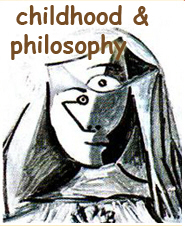museums of the future. the aesthetic-political implication in dispositives of “exclusion” of bio-power
Keywords:
bio-power, museum of the future, J. Rancière, emancipation, equalityAbstract
This text considers art as an action of life and power, or stated slightly differently, how art is an aesthetic-political game of implication in the bio-political device of our time, especially, in the spaces of “exclusion”, or “social exclusion”. In this sense the present paper builds on Saül Karsz’s interpretation of exclusion as a “false concept for a true problem” (La Exclusión: bordeando sus fronteras. definiciones y matices. Barcelona: Gedisa, 2004): that is, the exclusion of groups, populations, people is real… but it is also true that the disciplines that to investigate the subject use this real problem (i.e., there are excluded groups) for their own purposes. Exclusion as a concept qualifies an enormous field of discourse and research practices that convert the true problem of exclusion into a false concept: a weapon used to give to read, to watch and to interpret the problem of exclusion. Nevertheless, exclusion exists. And it is necessary to think of how we can treat it without relying on empty rhetoric or a fashioned position, or participating in a blind activism that depoliticizes the necessity to think about exclusion in all its forms. After discussing diverse contemporary aesthetic theories, and in particular the theories of J. Rancière, this work presents the figure of the museum of the future in which art can be understood as an aesthetic-political game able to transform life in its spaces of power, a promise of emancipation and equality.Downloads
Published
2012-01-03
How to Cite
guzmán, liliana j. (2012). museums of the future. the aesthetic-political implication in dispositives of “exclusion” of bio-power. Childhood & Philosophy, 2(4), pp. 409–434. Retrieved from https://www.e-publicacoes.uerj.br/childhood/article/view/20504
Issue
Section
articles




